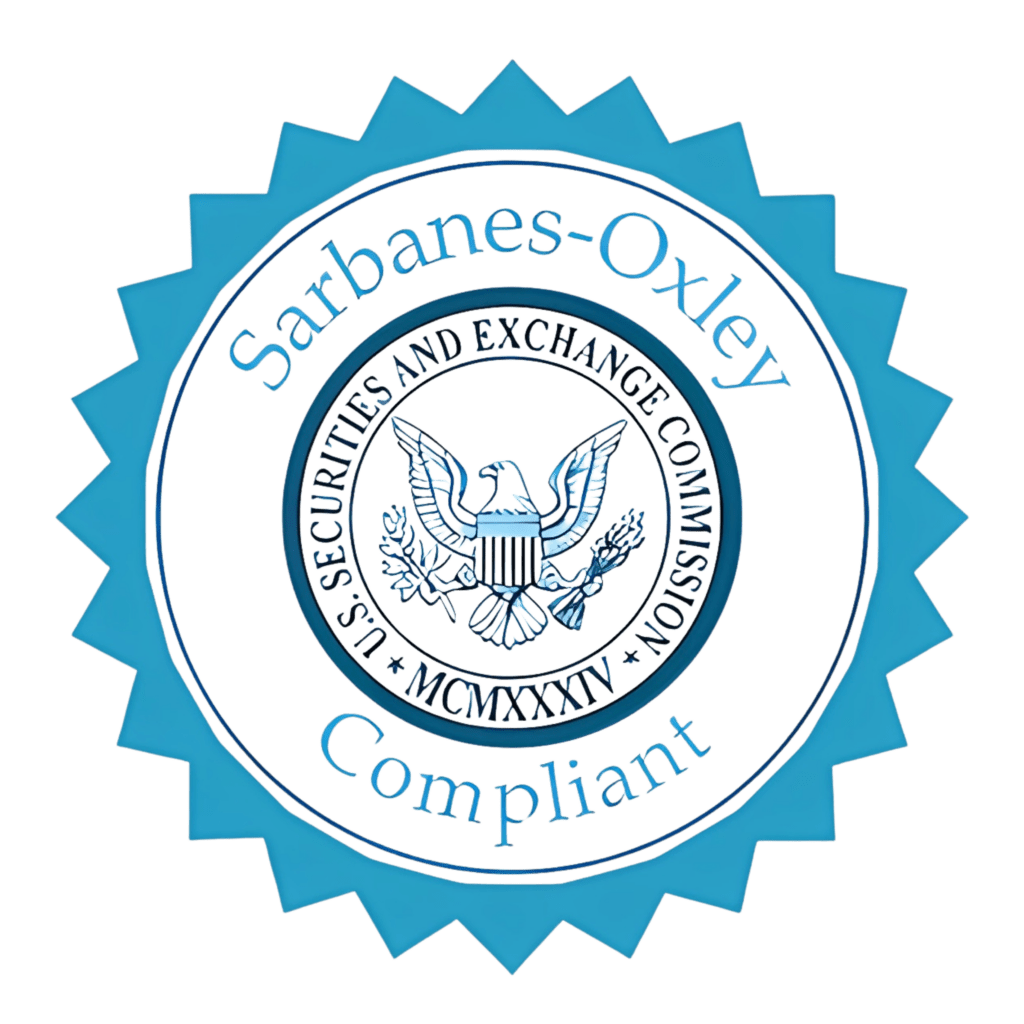A partnership that operates profitably, pays its creditors and employees on time, and files Form 1065 but omits a key disclosure on Schedule B may receive a notice from the IRS. The detail could be that foreign partners are not being disclosed or that related-party transactions are being overlooked. Something like this could lead to the partnership facing penalties, additional filings, and a potential audit.
This is why Schedule B of Form 1065 matters. While it may look like just a list of “extra questions,” Schedule B is how the IRS determines whether a partnership has foreign ownership, complex structures, or special elections that trigger further reporting. For partnerships with foreign partners or related entities, overlooking Schedule B can cause severe compliance headaches.
Put simply, Form 1065 reports the partnership’s income, deductions, and credits, while Schedule B digs deeper into ownership and compliance details. If your business has partners outside the U.S., Schedule B is the IRS’s way of making sure you’re fully disclosing everything.
Table of Contents
What is Schedule B of Form 1065?
So, what is Form 1065 B? It is the section of Form 1065 (U.S. Return of Partnership Income) that asks a series of compliance-focused questions about your partnership. Instead of calculating profits or losses, Schedule B requires you to disclose:
- Who your partners are (individuals, corporations, trusts, or foreign persons).
- Whether the partnership has foreign bank accounts or investments.
- Which accounting method (cash, accrual, or other) does the partnership use?
- If the partnership made an election like a Section 754 election.
Schedule B is a compliance checklist. While the rest of Form 1065 shows the “numbers,” Schedule B tells the IRS about the structure, ownership, and activities behind those numbers.
It also plays a role in IRS risk assessment. For example, if you answer “Yes” to having foreign partners or accounts, the IRS may expect you to file additional forms, such as:
- Schedule B-1 (Form 1065) – which provides detailed information on partners owning 50% or more of the partnership.
- Form 5471 or Form 8865 – for reporting ownership in certain foreign corporations or partnerships.
Schedule B is a questionnaire and also a trigger point for additional reporting obligations.

What Kind of Questions Are on Schedule B?
As of 2025, Schedule B includes 29 key questions that partnerships must answer. These questions fall into a few main categories:
- Ownership & Structure
- Example: “Does any individual or entity own 50% or more of the partnership’s capital, profits, or loss interests?”
- If “Yes,” you may also need to complete Schedule B-1 (Form 1065).
- Foreign Partners & Transactions
- Example: “Does the partnership have any foreign partners?”
- Answering “Yes” here usually means the partnership must comply with withholding rules under Section 1446 and issue Form 8805 to foreign partners.
- Accounting & Recordkeeping
- Example: “Does the partnership use the cash or accrual method of accounting?”
- This helps the IRS understand how income and expenses are being tracked.
- Special Tax Elections
- Example: “Has the partnership made a Section 754 election?”
- This election adjusts the basis of partnership property after certain transfers.
- Related-Party Transactions
- Example: “Did the partnership own an interest in a foreign corporation or partnership?”
- A “Yes” answer here often triggers more reporting forms.
Many taxpayers stumble over these questions, especially when foreign ownership or related entities are involved. For instance, answering incorrectly about foreign bank accounts or failing to disclose 50% ownership can lead to IRS penalties and increased scrutiny.
Who Must Complete Schedule B on Form 1065?
In general, all partnerships that file Form 1065 must also complete Schedule B. The IRS uses this section to determine whether additional schedules or international forms are required, so skipping it isn’t an option for most filers.
Schedule B is especially important in these situations:
- Partnerships with Foreign Partners
If any partner is a foreign individual, corporation, or entity, the partnership must disclose this on Schedule B. A “Yes” answer here usually means filing Form 8805 for each foreign partner and complying with Section 1446 withholding requirements. - Partnerships with Ownership in Foreign Corporations or Partnerships
If the partnership owns interests in a foreign entity, the IRS wants full disclosure. In many cases, this also means filing Form 5471 (foreign corporations) or Form 8865 (foreign partnerships). - Publicly Traded Partnerships (PTPs)
PTPs often have thousands of investors, many of whom may be non-U.S. persons. Schedule B helps the IRS determine whether additional international reporting applies. - Partnerships Making Special Elections
A classic example is the Section 754 election, which allows the partnership to adjust the basis of its assets after ownership changes. This must be disclosed on Schedule B.
Smaller partnerships that meet certain thresholds (e.g., under $250,000 in total receipts and under $1 million in assets) may qualify for simplified filing and might not have to complete all balance sheet schedules. However, they still need to answer Schedule B questions truthfully.
Instructions for Completing Schedule B
If you’re wondering how to fill out Schedule B, the IRS provides official guidance in the Form 1065 instructions, but here’s a simplified overview:
- Identify Your Entity Structure
Indicate whether your partnership is a general partnership, limited partnership, or LLC treated as a partnership. - Ownership Information
Disclose whether any partner owns 50% or more of the capital, profits, or losses. If so, you’ll also need to complete Schedule B-1 (Form 1065), which requires listing those partners. (The IRS provides separate Form 1065 Schedule B-1 instructions that explain how to do this correctly.) - Accounting Method
State whether you use the cash method, accrual method, or another method. - Foreign Accounts & Foreign Partners
Answer whether the partnership has any foreign partners or bank accounts. This is where many taxpayers go wrong by underreporting or assuming personal accounts don’t count. - Special Elections & Related-Party Transactions
Indicate if you’ve made a Section 754 election or had dealings with related parties.
Red Flags to Watch Out For:
- Forgetting to check “Yes” on foreign partner questions can trigger penalties later.
- There is a misunderstanding of the ownership threshold for Schedule B-1.
- Inconsistent answers between Schedule B and other parts of Form 1065.
For detailed guidance, partnerships should always review the IRS Form 1065 instructions.
And don’t forget: once Schedule B is complete, the full Form 1065 (including all schedules) must be filed electronically or mailed to the IRS. If mailing, where to file 1065 depends on your business’s location and whether you’re including a payment—this information is available on the IRS “Where to File Form 1065” page.
How Schedule B Impacts Other Parts of Form 1065
Schedule B doesn’t stand alone—it often determines whether you’ll need to complete additional schedules or even other IRS forms. Here’s how:
- Schedule L (Balance Sheet)
Schedule B asks whether your partnership’s total receipts and assets meet the filing thresholds. A “Yes” here usually means you must provide a complete balance sheet on Schedule L. - Schedule M-1 (Reconciliation of Income/Loss)
If your books show one set of numbers but your tax return shows another, you’ll need to reconcile the differences in Schedule M-1. Whether you need to file this is tied directly to your answers on Schedule B. - Schedule M-2 (Analysis of Partners’ Capital Accounts)
This schedule tracks changes in partners’ equity. Again, Schedule B helps determine if you’re required to file it. - International Reporting Obligations
- A “Yes” to foreign ownership questions may trigger Form 5471 (foreign corporations), Form 8865 (foreign partnerships), or Form 8805 (withholding for foreign partners).
- If one or more partners own 50% or more of the partnership, you must complete Schedule B-1 (Form 1065).
Schedule B acts like a gatekeeper—your answers there dictate whether you have more paperwork to complete. Answering incorrectly (or incompletely) could mean missing required schedules, which increases audit risk and potential penalties.
Key Areas Covered in Schedule B (Deep Dive)
Schedule B may look like a simple questionnaire, but each section serves a specific compliance purpose. Here’s a closer look at what the IRS is really asking:
Entity Classification & Structure
- Partnerships must disclose whether they are a general partnership (GP), limited partnership (LP), limited liability company (LLC), or publicly traded partnership (PTP).
- Publicly traded partnerships, in particular, face stricter disclosure rules because they often have complex ownership chains.
Ownership & Partner Information
- One of the most critical parts of Schedule B is determining who owns the partnership.
- If any partner owns 50% or more of the capital, profits, or loss interest, the partnership must also file Schedule B-1 (Form 1065).
- The IRS applies Form 1065 Schedule B-1 attribution rules, meaning ownership may be attributed indirectly through family members, related entities, or trusts. For example, if a corporation owned by one partner also holds shares in the partnership, those interests may be combined under attribution rules to determine majority ownership.
- This ensures that no significant ownership interests are hidden through indirect holdings.
Accounting & Books
- Schedule B asks which accounting method the partnership uses: cash basis, accrual basis, or another approved method.
- This helps the IRS understand how income and expenses are recognized and ensures consistency across the return.
Foreign Transactions & FATCA Compliance
- The IRS is particularly focused on foreign reporting. Schedule B asks:
- Does the partnership have foreign partners?
- Does it maintain foreign bank accounts?
- Does it own an interest in foreign corporations or partnerships?
- “Yes” answers here may require filing additional forms like Form 5471, Form 8865, or FinCEN Form 114 (FBAR). FATCA compliance is a significant reason why Schedule B exists.
Special Elections
- Partnerships must disclose whether they have made a Section 754 election, which adjusts the basis of partnership property when ownership interests change hands.
- This election can be tax-advantageous for new partners but comes with reporting obligations that the IRS tracks through Schedule B.
Related-Party Transactions
- If a partnership has transactions with related parties—such as controlled entities, corporations owned by partners, or trusts—the IRS requires disclosure.
- These transactions are closely scrutinized because they may shift income or deductions in ways that affect tax liability.
Why is Schedule B Important?
Although at first glance, Schedule B might seem like “extra paperwork,” in reality, it’s one of the most essential parts of Form 1065. Here’s why:
- Compliance and Transparency
The IRS uses Schedule B to ensure partnerships are being upfront about ownership, foreign connections, and special elections. Failing to disclose adequately can lead to penalties and extra filings. - Risk Management
Incorrect or incomplete answers, especially about foreign partners or related entities, can flag a partnership for audit. By answering Schedule B correctly, partnerships reduce their audit risk. - Tax Planning
Schedule B disclosures help identify whether a partnership must file Schedule B-1 1065 or other international forms. This gives tax professionals a roadmap for proper planning, especially when foreign ownership is involved. - Peace of Mind
A correctly filed Schedule B means fewer IRS surprises down the line. Partnerships can operate confidently knowing they’ve met disclosure requirements and won’t be caught off guard by attribution rules or hidden obligations.

Conclusion
In summary, Schedule B of Form 1065 is a compliance safeguard that protects partnerships from hidden risks. From entity classification to foreign ownership disclosures, and even the Form 1065 Schedule B 1 attribution rules, every answer on Schedule B has consequences.
When completed accurately, Schedule B ensures:
- Compliance with IRS regulations.
- Full disclosure of ownership and foreign ties.
- Reduced audit risk and potential penalties.
If your partnership has foreign partners, related-party transactions, or ownership complexities, don’t risk filing errors. Our tax professionals specialize in partnership returns and can guide you through Schedule B, Schedule B-1, and all related filings.
Profitjets is a trusted and preferred Tax Advisor and Tax consultant, where certified and experienced experts handle your tax strategy, Tax filing, and use all relevant deductions to manage your tax liability. We take pride in providing the end-to-end service from bookkeeping to taxation and even advisory services like Virtual CFO Services. The wide array of services we offer includes outsourced accounting and bookkeeping, outsourced bookkeeping for CPAs, tax filing and tax compliance services, and virtual CFO services. Get in touch with us so we can manage the filing of Form 1065 Schedule B this tax season.
FAQs About Form 1065 Schedule B
1. What is Schedule B on Form 1065 used for?
Schedule B is a section of Form 1065 that gathers compliance and disclosure information about a partnership. Instead of reporting income or expenses, it asks about ownership, foreign partners, accounting methods, related-party transactions, and tax elections. The IRS uses these answers to determine whether your partnership must complete additional schedules like Schedule L, M-1, and M-2, or file forms for international reporting.
2. Who must complete Schedule B?
Almost all partnerships filing Form 1065 must complete Schedule B. It’s especially critical for:
– Partnerships with foreign partners.
– Partnerships with ownership in foreign corporations or partnerships.
– Publicly traded partnerships (PTPs).
– Partnerships are making special elections, like the Section 754 election.
If any partner owns 50% or more of the partnership (directly or indirectly under Form 1065 Schedule B-1 attribution rules), the partnership may also need to file Schedule B-1 (Form 1065).
3. Does Schedule B apply to partnerships with no foreign partners?
Yes. Even if a partnership has no foreign partners, it must still answer all of Schedule B’s questions. While the foreign ownership and foreign account questions may not apply, other sections—like accounting method, related-party transactions, or ownership thresholds—still do.
4. What is a Section 754 election in Schedule B?
A Section 754 election allows a partnership to adjust the tax basis of its property when ownership interests change. This adjustment can benefit new or departing partners by aligning the inside and outside basis of assets. If a partnership makes this election, it must disclose it on Form 1065 Schedule B. This is one of the most commonly flagged questions on the schedule.
5. Do Schedule B answers affect whether I need to complete Schedule L, M-1, and M-2?
Yes. Schedule B acts as a “gatekeeper” for other parts of Form 1065. Your answers determine whether you must complete:
– Schedule L (Balance Sheets)
– Schedule M-1 (Reconciliation of Income/Loss)
– Schedule M-2 (Analysis of Partners’ Capital Accounts)
If your partnership exceeds certain thresholds or has complex ownership, a “Yes” answer on Schedule B usually means these schedules are required.
6. What is Schedule B-1 1065, and when is it required?
Schedule B-1 (Form 1065) is an attachment required when any partner owns 50% or more of the partnership’s capital, profits, or loss interest. The IRS applies attribution rules, meaning ownership may be counted indirectly through family members, trusts, or related entities. If you answer “Yes” to the 50% ownership question on Schedule B, you must complete Schedule B-1 1065 and provide detailed partner information.
7. Where do I file Form 1065 with Schedule B?
Most partnerships must file Form 1065 and all schedules electronically with the IRS. However, if you qualify for paper filing, the “where to file 1065” address depends on your principal business location and whether you’re including a payment. The IRS updates its “Where to File Form 1065” page each year, so always confirm the current address before mailing.
8. What happens if I make a mistake on Schedule B?
Errors or omissions on Schedule B—like failing to disclose foreign partners, not filing Schedule B-1 when required, or misreporting related-party transactions—can trigger penalties and increase audit risk. If you discover a mistake, you should file an amended return (Form 1065X) to correct it.










